Wei Qimei
1923-2009
Studying under Sun Duoci in his teenage years, Wei Qimei enrolled at National Central University in 1942, graduated in 1947 and joined the Painting Department of Central Academy of Fine Arts as a faculty member in 1950. Like most of his contemporary artists from 1950s to 1970s, Wei adopted a realistic and figurative method in his practice, and created a series of thematic, storytelling oil paintings closely connected with political ideology.
In the upheavals of the Chinese society in the 1970s, arts and culture gradually came to face a less stressful situation, allowing the artists to explore and experiment on new genres and forms. Wei in his late fifties was inspired by the burgeoning art events and active young artists to have the ‘courage to participate in an art marathon’. At this stage, his work on modern urban life shies away from the heaviness of history in his earlier paintings, conjuring up the future with a lightness of touch that speaks about the promising and unfailing technology and knowledge.
Wei delivers a ‘forward-looking’ attitude in his work throughout his life – such pursuit of ‘new things’ corresponds with his sensibility towards novel topics as a caricaturist, as well as the urgent break from the old age when the entire art-world embraced the new era. Meanwhile, it was a result of the realistic tendency in arts and culture which celebrated new life and new times since the 1950s. Accordingly, Wei’s work displays a detached realism that bridges the historical and the new, a style concluded as ‘poetic realism’ by critics. The loosening culture in the late seventies enabled a diverse range of expression on formal beauty, while new languages were in need to depict the modern urban life. Notably inspired by Edward Hopper, Wei explored formality, order and the relationship between line and plane, and worked out a succinct way of distancing the image and the real life. Oscillating between the poetic detachment and the realistic narratives, Wei’s work demonstrates a literary efficacy that is almost story-telling and avoids figurative depiction. The distancing effect allows his work to move between the general, illusory social narrative and the intimate, tangible narrative in everyday life, which broadens the expression of realism.
Studying under Sun Duoci in his teenage years, Wei Qimei enrolled at National Central University in 1942, graduated in 1947 and joined the Painting Department of Central Academy of Fine Arts as a faculty member in 1950. Like most of his contemporary artists from 1950s to 1970s, Wei adopted a realistic and figurative method in his practice, and created a series of thematic, storytelling oil paintings closely connected with political ideology.
In the upheavals of the Chinese society in the 1970s, arts and culture gradually came to face a less stressful situation, allowing the artists to explore and experiment on new genres and forms. Wei in his late fifties was inspired by the burgeoning art events and active young artists to have the ‘courage to participate in an art marathon’. At this stage, his work on modern urban life shies away from the heaviness of history in his earlier paintings, conjuring up the future with a lightness of touch that speaks about the promising and unfailing technology and knowledge.
Wei delivers a ‘forward-looking’ attitude in his work throughout his life – such pursuit of ‘new things’ corresponds with his sensibility towards novel topics as a caricaturist, as well as the urgent break from the old age when the entire art-world embraced the new era. Meanwhile, it was a result of the realistic tendency in arts and culture which celebrated new life and new times since the 1950s. Accordingly, Wei’s work displays a detached realism that bridges the historical and the new, a style concluded as ‘poetic realism’ by critics. The loosening culture in the late seventies enabled a diverse range of expression on formal beauty, while new languages were in need to depict the modern urban life. Notably inspired by Edward Hopper, Wei explored formality, order and the relationship between line and plane, and worked out a succinct way of distancing the image and the real life. Oscillating between the poetic detachment and the realistic narratives, Wei’s work demonstrates a literary efficacy that is almost story-telling and avoids figurative depiction. The distancing effect allows his work to move between the general, illusory social narrative and the intimate, tangible narrative in everyday life, which broadens the expression of realism.
Related essays
-

-
抒情·幻想·叙事——韦启美的诗意现实主义
2020-02-26
他说:“我希望表现地平线上出现的第一个,不希望表现在天边消失的最后一个。我会因给第一个唱赞歌而感到骄傲,为什么不?不会为最后一个眷恋叹息,因为我是一个乐观主义者。”More
-

-
诗意盎然的青春气息——韦启美的创作转型
2020-02-27
那么,应当如何对待这曾经是相当普遍的历史局限呢?——“我不相信艺术创造有绝对的自由,自由创造只是相对于艺术家所要超越、突破和消解已成为某种霸权的或已濒临僵化的规范"。试想,如果没有这种历史的自觉,如果没有对自己所经历的艺术道路这样冷静、实事求是的分析,就很难从这巨大的路障实现历史性的突破。More



